Key Takeaways
- App design software streamlines the design process by offering tools for rapid prototyping, collaboration, and design consistency, enhancing efficiency and creativity.
- Key features of app design software include real-time collaboration, reusable design systems, and seamless integration with development tools, ensuring smooth workflows.
- App design software helps overcome common challenges like miscommunication, user-centric design difficulties, and technical limitations, leading to higher-quality, user-friendly applications.
In today’s rapidly evolving digital landscape, the demand for innovative and user-friendly mobile applications has never been greater.
As businesses and individuals strive to create impactful and engaging apps, the role of app design software becomes increasingly crucial.
App design software encompasses a wide array of tools and platforms that facilitate the design process, enabling creators to visualize, prototype, and refine their ideas before they transition into the development phase.
But what exactly is app design software?
At its core, it serves as a comprehensive toolkit for designers and developers, allowing them to craft intuitive user interfaces (UI) and seamless user experiences (UX).
These tools empower users to collaborate effectively, experiment with various design elements, and iterate based on user feedback, ultimately ensuring that the final product resonates with its target audience.
The significance of app design software extends beyond mere aesthetics. A well-designed application not only attracts users but also enhances user engagement, retention, and satisfaction.
This is where the power of design comes into play. Effective UI/UX design creates a harmonious interaction between users and their devices, resulting in a seamless experience that encourages prolonged usage.
By utilizing app design software, designers can employ best practices and design principles that elevate the overall quality of their applications, making them stand out in a crowded marketplace.
Moreover, the rise of agile methodologies and iterative design processes has transformed the way teams approach app development.
In this context, app design software plays a pivotal role in fostering collaboration among team members, whether they are designers, developers, product managers, or stakeholders.
Features such as real-time collaboration, version control, and feedback loops enable teams to work more efficiently and cohesively, reducing the time it takes to bring an app from concept to launch.
As we delve deeper into this blog, we will explore the various types of app design software available today, ranging from graphic design and prototyping tools to specialized UI/UX platforms.
Each of these tools offers unique features that cater to different aspects of the design process, ensuring that creators have access to the right resources for their specific needs.
Furthermore, we will discuss how these tools work, outlining the step-by-step processes that designers typically follow when using app design software.
In addition to understanding the mechanics of app design software, we will examine the latest trends and popular tools that are shaping the industry in 2024.
By providing an overview of the leading software solutions and their key functionalities, we aim to equip readers with the knowledge they need to make informed decisions about which tools to adopt for their own app design projects.
Ultimately, this exploration of app design software will highlight not only its essential role in the development process but also its potential to revolutionize the way we think about app design.
Whether you are a seasoned designer, a budding entrepreneur, or someone interested in understanding the dynamics of app development, this blog will serve as a comprehensive guide to what app design software is and how it can enhance the creation of engaging and user-centric applications.
Join us as we embark on this journey to demystify app design software and uncover the principles that drive successful app development in today’s digital era.
What is App Design Software and How It Works
- Understanding App Design Software
- Key Features of App Design Software
- How App Design Software Works
- Benefits of Using App Design Software
- Challenges in App Design and How Software Can Help
1. Understanding App Design Software
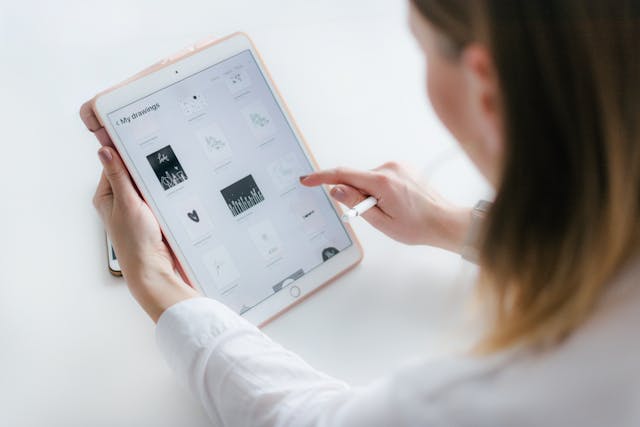
App design software is an essential component of the modern app development process, enabling designers and developers to create visually appealing and functional applications.
This section aims to provide a comprehensive understanding of what app design software entails, its significance, and the various types available in the market today.
What is App Design Software?
- Definition: App design software is a suite of tools that assist in the creation, development, and prototyping of applications, focusing on user interface (UI) and user experience (UX) design.
- Purpose:
- To facilitate the design process.
- To enhance collaboration among team members.
- To streamline the transition from design to development.
Importance of App Design Software
- Enhanced User Experience:
- Provides tools for creating intuitive and engaging user interfaces.
- Allows for the testing of user interactions and navigation before development begins.
- Improved Collaboration:
- Supports teamwork by enabling real-time feedback and version control.
- Facilitates communication between designers and developers, ensuring alignment on project goals.
- Cost-Effective Development:
- Identifies design flaws early in the process, reducing costly revisions during development.
- Streamlines the design workflow, leading to faster project completion.
Types of App Design Software
- Graphic Design Tools
- Purpose: To create visual elements such as icons, logos, and illustrations.
- Examples:
- Adobe Photoshop:
- Industry-standard for graphic design.
- Provides powerful editing capabilities for creating detailed graphics.
- Adobe Illustrator:
- Best suited for vector graphics.
- Allows designers to create scalable designs that maintain quality at any size.
- Adobe Photoshop:
- Prototyping Tools
- Purpose: To create interactive prototypes that simulate the user experience.
- Examples:
- InVision:
- Enables designers to upload static screens and create clickable prototypes.
- Supports user testing and feedback collection.
- Figma:
- A browser-based design tool that allows real-time collaboration.
- Offers features for creating interactive prototypes with transitions and animations.
- InVision:
- UI/UX Design Software
- Purpose: To focus specifically on designing user interfaces and enhancing user experiences.
- Examples:
- Sketch:
- Popular among UI/UX designers for its vector-based design capabilities.
- Offers plugins that extend functionality, such as design systems and style guides.
- Adobe XD:
- Combines vector design and wireframing capabilities.
- Supports collaboration with integrated feedback tools and sharing features.
- Sketch:
- Collaboration Tools
- Purpose: To facilitate communication and collaboration among design teams and stakeholders.
- Examples:
- Zeplin:
- Bridges the gap between designers and developers.
- Provides a platform to share design specs and assets easily.
- Marvel:
- Allows for easy sharing of prototypes and feedback collection.
- Includes user testing features to gather insights from potential users.
- Zeplin:
Key Features of App Design Software
- User Interface (UI) Design Features:
- Drag-and-drop functionality for easy layout creation.
- Pre-designed templates and components for faster design processes.
- Design libraries to maintain consistency across different screens and platforms.
- User Experience (UX) Design Features:
- Tools for creating user personas and mapping user journeys.
- A/B testing capabilities to compare different design variations.
- Analytics tools to track user interactions and gather insights.
- Prototyping and Wireframing Features:
- Tools for creating low-fidelity wireframes to outline app structure.
- High-fidelity prototypes with animations and transitions to simulate real user interactions.
- User testing features to gather feedback and iterate on designs.
- Collaboration and Feedback Features:
- Real-time commenting and annotation on design files.
- Version history to track changes and revert to previous designs if necessary.
- Integration with project management tools for seamless workflow management.
The Design Process Using App Design Software
- Conceptualization:
- Brainstorming ideas and defining project objectives.
- Creating user personas to understand target audience needs.
- Wireframing:
- Developing low-fidelity wireframes to outline the basic structure and layout.
- Utilizing tools like Balsamiq or Axure for quick iterations.
- Designing:
- Creating high-fidelity designs using graphic design tools.
- Applying color schemes, typography, and visual elements.
- Prototyping:
- Developing interactive prototypes using tools like InVision or Figma.
- Conducting user testing sessions to gather feedback on usability.
- Iterating:
- Refining designs based on user feedback and analytics.
- Collaborating with team members to ensure alignment on changes.
- Development Handoff:
- Preparing design assets and specifications for developers.
- Using collaboration tools like Zeplin to streamline the handoff process.
Conclusion
Understanding app design software is fundamental for anyone involved in app development, from designers to project managers.
With a variety of tools available, each serving distinct purposes, designers can leverage these resources to create exceptional applications that meet user needs and business objectives.
As we continue this exploration, we will delve into the functionalities of these tools, their impact on the design process, and the latest trends shaping the future of app design.
2. Key Features of App Design Software
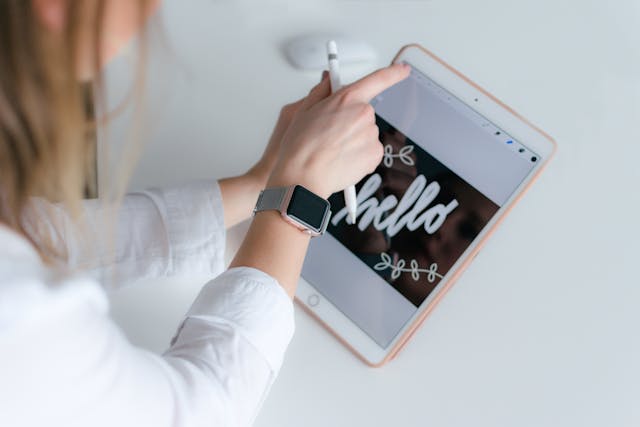
App design software plays a pivotal role in the application development process, providing designers with the necessary tools to create user-friendly and visually appealing applications. Understanding the key features of app design software is essential for leveraging its full potential. This section explores the fundamental capabilities that these tools offer, enhancing the efficiency and effectiveness of the design workflow.
1. User Interface (UI) Design Features
User Interface (UI) design features are essential for creating visually appealing and intuitive app interfaces. These capabilities allow designers to focus on aesthetics while ensuring that users have a seamless experience when navigating the application.
- Drag-and-Drop Functionality:
- Enables designers to easily position and manipulate design elements.
- Simplifies the process of layout creation, making it accessible to users with varying levels of design expertise.
- Pre-Designed Templates and Components:
- Provides a library of templates that can be customized for different app categories.
- Examples:
- Figma offers a variety of UI kits for different platforms, including iOS and Android.
- Sketch provides numerous community-created templates that save time in the design process.
- Design Libraries and Style Guides:
- Facilitates consistency across different screens and components by using standardized styles.
- Example: Adobe XD allows designers to create shared libraries that can be updated and reused across multiple projects.
- Responsive Design Tools:
- Tools to ensure that app designs adapt to various screen sizes and orientations.
- Example: InVision Studio provides features to design responsive layouts that automatically adjust based on the screen dimensions.
2. User Experience (UX) Design Features
User Experience (UX) design features focus on enhancing the usability and overall experience of the app for the end-users. These tools allow designers to test, iterate, and refine their designs based on user feedback.
- User Persona Creation:
- Tools that help in creating detailed profiles of target users to guide design decisions.
- Example: UXPin allows users to build user personas based on demographic data, user goals, and behavior patterns.
- User Journey Mapping:
- Tools for visualizing the user’s interaction with the app over time, identifying pain points and opportunities for improvement.
- Example: Miro is a collaborative online whiteboard tool that helps teams map out user journeys effectively.
- A/B Testing Capabilities:
- Enables designers to create multiple variations of a design to determine which performs better with users.
- Example: Optimizely provides a robust platform for conducting A/B tests, allowing designers to analyze user interactions and make data-driven decisions.
- Analytics Tools Integration:
- Integration with analytics platforms to track user behavior and interactions with the app.
- Example: Google Analytics can be integrated with design prototypes to gather insights on user engagement and drop-off rates.
3. Prototyping and Wireframing Features
Prototyping and wireframing features are crucial for visualizing the app’s layout and functionality before development begins. These tools allow designers to create interactive mock-ups that simulate the user experience.
- Low-Fidelity Wireframing Tools:
- Tools that allow designers to sketch out app layouts and interfaces quickly, focusing on structure rather than aesthetics.
- Example: Balsamiq provides a user-friendly interface for creating low-fidelity wireframes that resemble hand-drawn sketches.
- High-Fidelity Prototyping:
- Tools that enable designers to create detailed and interactive prototypes that closely resemble the final product.
- Example: Framer allows for the creation of high-fidelity prototypes with advanced animations and transitions.
- Clickable Prototypes:
- Features that enable users to interact with prototypes, simulating real user interactions.
- Example: InVision provides a platform for building clickable prototypes that can be shared for user testing and feedback.
- Animation and Transition Tools:
- Tools for adding animations and transitions to prototypes, enhancing the overall user experience.
- Example: Adobe XD includes capabilities for creating animated transitions between screens, allowing designers to visualize how the app will behave.
4. Collaboration and Feedback Features
Collaboration and feedback features are vital for ensuring that design teams can work together effectively, regardless of their location. These tools facilitate communication, feedback collection, and project management.
- Real-Time Collaboration:
- Allows multiple team members to work on the same design file simultaneously, enhancing teamwork and reducing discrepancies.
- Example: Figma is renowned for its real-time collaboration features, enabling designers to see changes as they happen.
- Commenting and Annotation Tools:
- Features that allow stakeholders to leave feedback directly on design files, streamlining the review process.
- Example: Marvel includes built-in commenting features, enabling stakeholders to provide feedback without leaving the design environment.
- Version Control:
- Tools that track changes made to design files, allowing designers to revert to previous versions if needed.
- Example: Abstract integrates with Sketch to offer version control, making it easier to manage design iterations.
- Integration with Project Management Tools:
- Compatibility with tools like Trello, Asana, or Jira for seamless project management and task tracking.
- Example: Slack can be integrated with various design tools to facilitate communication and updates on design progress.
5. Handoff Features for Developers
Design handoff features ensure that designers can effectively communicate their designs to developers, streamlining the transition from design to development.
- Design Specs and Assets:
- Tools that automatically generate design specifications, measurements, and assets for developers.
- Example: Zeplin provides a platform for designers to export their designs with detailed specs, making it easier for developers to implement them accurately.
- Style Guides and Design Systems:
- Creation of comprehensive style guides that define design rules, color palettes, typography, and component usage.
- Example: Storybook allows teams to create reusable components and document design systems for easier handoff to developers.
- Code Generation:
- Some design tools offer features that automatically generate code snippets for certain design elements.
- Example: Figma has plugins that can convert design elements into code for platforms like React and Flutter.
Conclusion
The key features of app design software are integral to the design process, enhancing both the creativity and efficiency of designers and their teams.
From UI design to user experience testing, prototyping, collaboration, and developer handoff, these tools provide the necessary functionalities to create successful applications.
By understanding and leveraging these features, designers can optimize their workflow, produce high-quality designs, and ultimately deliver applications that resonate with users.
In the next sections, we will explore how these features work together in the app design process and discuss some of the leading app design software available today.
3. How App Design Software Works
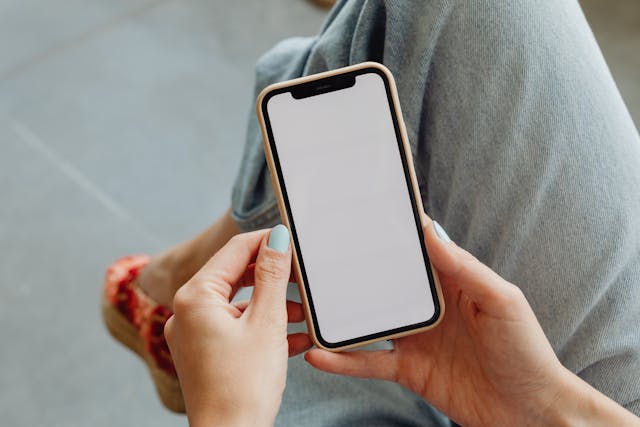
App design software operates through a combination of user-friendly interfaces, advanced features, and collaborative tools that facilitate the creation, prototyping, and testing of applications.
Understanding how these tools work is essential for designers, developers, and project managers aiming to create high-quality applications.
This section provides an in-depth look at the processes involved in app design software, from initial conceptualization to final handoff.
1. Conceptualization and Ideation
The design process begins with conceptualization, where ideas are generated and refined based on user needs and project goals.
- Brainstorming:
- Teams gather to generate ideas for the app’s purpose, features, and target audience.
- Example: Using tools like Miro, teams can create visual boards to organize their thoughts and concepts collaboratively.
- User Research:
- Conducting surveys, interviews, and focus groups to gather insights about potential users.
- Example: SurveyMonkey can be used to create questionnaires that help identify user preferences and pain points.
- Creating User Personas:
- Designers develop profiles that represent different segments of the target audience.
- Example: UXPin allows teams to build detailed user personas, including demographics, goals, and behaviors.
2. Wireframing
Once ideas are conceptualized, the next step is to create wireframes that outline the basic structure and layout of the app.
- Low-Fidelity Wireframes:
- Simple sketches or digital representations that focus on layout and functionality rather than aesthetics.
- Example: Balsamiq enables quick creation of low-fidelity wireframes that resemble hand-drawn sketches, facilitating fast iterations.
- High-Fidelity Wireframes:
- Detailed wireframes that incorporate design elements like colors, fonts, and images to provide a clearer vision of the final product.
- Example: Figma allows designers to create high-fidelity wireframes with interactive elements, giving stakeholders a more accurate representation of the app’s flow.
3. UI Design
The User Interface (UI) design phase involves adding visual elements to the wireframes, focusing on aesthetics and usability.
- Designing Visual Elements:
- Designers create icons, buttons, and other graphical elements that will be used in the app.
- Example: Adobe Illustrator is commonly used for designing custom icons and graphics.
- Using Design Libraries:
- Accessing libraries of pre-made components and templates that can be customized.
- Example: Sketch has an extensive library of UI kits that streamline the design process, enabling designers to maintain consistency across different screens.
- Color and Typography:
- Selecting appropriate color schemes and typography to create a visually appealing interface.
- Example: Coolors is a color scheme generator that helps designers choose harmonious color palettes for their apps.
4. Prototyping
Prototyping allows designers to create interactive mock-ups that simulate the app’s functionality and user experience.
- Creating Clickable Prototypes:
- Designers link screens and add interactive elements to demonstrate navigation and user flows.
- Example: InVision allows designers to upload static screens and create clickable prototypes that stakeholders can navigate.
- User Testing with Prototypes:
- Conducting usability testing with real users to gather feedback on the prototype’s functionality.
- Example: UserTesting provides a platform for designers to share prototypes and receive valuable insights from actual users.
- Iterating on Feedback:
- Analyzing feedback gathered from user testing to make necessary adjustments and improvements to the design.
- Example: Using tools like Lookback, designers can record user sessions and gather feedback for further iteration.
5. Collaboration and Feedback
Effective collaboration is essential throughout the design process, allowing teams to communicate and share feedback.
- Real-Time Collaboration:
- Designers work together on the same design file simultaneously, providing immediate feedback and updates.
- Example: Figma excels in real-time collaboration, allowing multiple users to edit designs and leave comments concurrently.
- Commenting and Annotation:
- Stakeholders can leave comments directly on design files, streamlining the review process.
- Example: Marvel includes built-in commenting features, allowing team members to discuss specific elements within the design context.
- Version Control:
- Tracking changes made to design files and reverting to previous versions if necessary.
- Example: Abstract integrates with Sketch, providing version control that allows designers to manage iterations effectively.
6. Development Handoff
Once the design is finalized, it’s crucial to facilitate a smooth handoff to developers.
- Exporting Design Assets:
- Designers export graphics, icons, and other visual elements for use in the development process.
- Example: Zeplin allows designers to export designs with detailed specs, including measurements and styles, making it easier for developers to implement the design accurately.
- Providing Design Specifications:
- Tools that generate specifications and guidelines for developers to follow during the coding phase.
- Example: Figma provides a feature to generate style guides and export code snippets, simplifying the handoff process.
- Collaboration with Developers:
- Ongoing communication between designers and developers to ensure the final product aligns with the design intent.
- Example: Using Slack or Microsoft Teams can facilitate communication and updates during the development phase.
7. Post-Launch Evaluation
After the app is launched, it’s essential to evaluate its performance and gather user feedback for future improvements.
- Collecting User Feedback:
- Using analytics tools and user surveys to gather insights about the app’s performance and user satisfaction.
- Example: Google Analytics can be integrated to track user engagement and identify areas for improvement.
- Continuous Iteration:
- Designers continue to iterate on the app based on user feedback and evolving design trends.
- Example: Hotjar can provide insights into user behavior through heatmaps and session recordings, helping teams make data-driven design decisions.
Conclusion
Understanding how app design software works is crucial for creating successful applications. From conceptualization and wireframing to UI design, prototyping, collaboration, development handoff, and post-launch evaluation, each stage of the design process is interconnected.
By leveraging the capabilities of app design software effectively, designers can produce high-quality applications that meet user needs and business objectives.
In the next sections, we will explore the leading app design software available today, focusing on their unique features and benefits.
4. Benefits of Using App Design Software
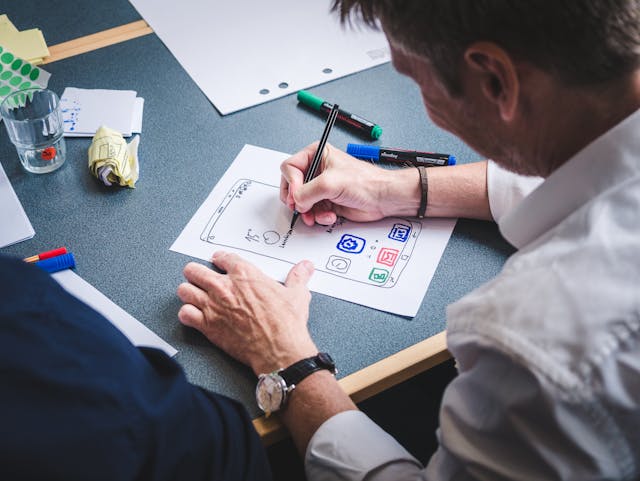
The utilization of app design software has revolutionized the way applications are conceptualized, designed, and developed.
By streamlining the design process, these tools offer a myriad of benefits that enhance productivity, collaboration, and user satisfaction.
This section delves into the key advantages of using app design software, illustrating how it can significantly improve the app development lifecycle.
1. Enhanced Collaboration and Communication
- Real-Time Collaboration:
- Many app design tools enable multiple users to work on a project simultaneously.
- Example: Figma allows designers, developers, and stakeholders to collaborate in real-time, reducing miscommunication and enhancing teamwork.
- Centralized Feedback Mechanism:
- Stakeholders can leave comments and feedback directly on design files, promoting clarity and reducing back-and-forth emails.
- Example: InVision includes commenting features that allow team members to discuss specific design elements within the context of the project.
- Version Control:
- App design software often includes version control features, allowing teams to track changes and revert to previous versions if necessary.
- Example: Abstract provides version control capabilities for Sketch users, enabling seamless management of design iterations.
2. Streamlined Design Process
- Rapid Prototyping:
- App design software allows for the quick creation of prototypes, enabling teams to visualize ideas and test concepts early in the design phase.
- Example: Adobe XD provides tools for creating interactive prototypes that simulate the user experience, facilitating early user testing and feedback.
- Pre-Made Templates and Assets:
- Many design tools come with a library of pre-made templates, UI components, and design assets, saving time and effort.
- Example: Sketch offers a variety of UI kits and design templates that designers can customize for their projects, speeding up the design process.
- Integration with Other Tools:
- App design software often integrates with project management and development tools, creating a cohesive workflow.
- Example: Figma integrates with tools like Jira and Slack, allowing for seamless communication and task management across teams.
3. Improved User Experience
- User-Centric Design Focus:
- App design software often includes user testing features that facilitate gathering feedback from real users.
- Example: UsabilityHub allows designers to test their prototypes with users to gain insights into usability and preferences, enhancing the overall user experience.
- Iterative Design Process:
- The ability to quickly iterate based on user feedback helps ensure that the final product meets user expectations and needs.
- Example: By using tools like Lookback, designers can record user interactions and gather qualitative feedback to inform design revisions.
- Accessibility Features:
- Many app design tools come with built-in features to ensure designs are accessible to all users, including those with disabilities.
- Example: Axure RP offers tools to check for accessibility compliance, ensuring that designs adhere to standards like WCAG (Web Content Accessibility Guidelines).
4. Cost Efficiency
- Reduced Development Costs:
- By identifying design flaws early in the process through prototyping and user testing, teams can minimize costly revisions during development.
- Example: Utilizing Marvel for quick prototyping allows teams to validate their designs before any code is written, leading to cost savings in the long run.
- Time Savings:
- Automation features and pre-built components reduce the time required to complete design tasks.
- Example: Tools like Canva offer drag-and-drop functionality for creating graphics, significantly speeding up the design process.
- Lower Learning Curve:
- Many app design tools are designed to be user-friendly, enabling team members without extensive design backgrounds to contribute effectively.
- Example: Webflow allows users to design visually without needing to write code, making it accessible for non-technical team members.
5. High-Quality Output
- Consistency in Design:
- App design software provides tools to maintain consistency across designs through the use of style guides, design systems, and reusable components.
- Example: Zeplin helps teams create a style guide from the design file, ensuring that developers implement consistent design elements in the final product.
- Responsive Design Features:
- Many design tools include features that enable designers to create responsive layouts that adapt to various screen sizes and devices.
- Example: Bootstrap Studio allows designers to build responsive websites visually, ensuring that apps function well across different platforms.
- Export Quality Assets:
- App design software often provides high-quality export options for images and other assets, ensuring the best visual fidelity in the final product.
- Example: Sketch allows designers to export assets in various formats and resolutions, catering to different platform requirements.
6. Continuous Learning and Improvement
- Access to Design Communities:
- Many app design tools come with access to active communities where designers can share knowledge, resources, and feedback.
- Example: The Figma Community allows users to explore and remix templates created by other designers, fostering a collaborative environment.
- Integration of Design Trends:
- App design software often updates its features and libraries to align with the latest design trends and technologies.
- Example: Adobe XD regularly updates its plugin marketplace, providing designers with tools that enhance their workflows and keep them up-to-date with industry trends.
- Educational Resources:
- Many app design platforms offer tutorials, webinars, and other educational materials to help users improve their skills.
- Example: Canva Design School provides free courses on design principles, helping users enhance their design abilities.
Conclusion
The benefits of using app design software are substantial, encompassing improved collaboration, streamlined processes, enhanced user experiences, cost savings, high-quality outputs, and opportunities for continuous learning.
By leveraging these tools effectively, teams can create applications that not only meet business objectives but also delight users.
As the landscape of app design continues to evolve, utilizing the right software becomes increasingly critical for success in a competitive marketplace.
5. Challenges in App Design and How Software Can Help
The journey of app design is fraught with challenges that can significantly hinder the efficiency and quality of the final product.
However, the right app design software can alleviate many of these issues, streamlining processes and enhancing overall design effectiveness.
This section delves into common challenges faced in app design and explores how software solutions can provide support and improve outcomes.
1. Miscommunication Among Team Members
- Diverse Team Structures:
- Teams often consist of designers, developers, product managers, and stakeholders, leading to varied expectations and communication styles.
- Misalignment can result in design flaws and project delays.
- Solution: Collaborative Tools:
- Many app design software platforms provide real-time collaboration features that promote transparency and effective communication.
- Example: Figma allows team members to work on designs simultaneously, facilitating instant feedback and reducing miscommunication.
2. Design Consistency
- Inconsistent UI Elements:
- Ensuring a uniform design across various screens and components can be challenging, leading to a disjointed user experience.
- Different designers may use varying styles and components, which can confuse users.
- Solution: Design Systems and Libraries:
- App design software often includes design system functionalities, allowing teams to create and maintain consistent styles and components.
- Example: Sketch enables users to build reusable components and style guides, ensuring that all team members adhere to the same design principles.
3. Time Constraints and Rapid Iteration
- Fast-Paced Development Cycles:
- In today’s competitive environment, the need for quick iterations can pressure designers to produce quality work in a limited timeframe.
- Rapid prototyping is essential to gather user feedback and make necessary adjustments promptly.
- Solution: Prototyping and Automation Features:
- App design software provides tools for creating prototypes quickly, allowing teams to visualize concepts and gather feedback efficiently.
- Example: Adobe XD enables designers to create interactive prototypes with minimal effort, facilitating user testing and quicker design iterations.
4. User-Centric Design Challenges
- Understanding User Needs:
- Designing an app that meets user expectations requires comprehensive research and understanding of target audiences.
- Lack of user insights can lead to designs that do not resonate with users, ultimately affecting app adoption and satisfaction.
- Solution: User Testing and Feedback Tools:
- Many design platforms include features for conducting user testing, enabling designers to gather valuable insights early in the design process.
- Example: UsabilityHub allows designers to test prototypes with real users, offering feedback that informs design decisions and improves user experience.
5. Technical Limitations
- Integration with Development Processes:
- Ensuring that designs are feasible for developers to implement can be a significant challenge, often resulting in discrepancies between design and final product.
- Designers may lack the technical knowledge to create designs that are both visually appealing and technically viable.
- Solution: Handoff and Documentation Tools:
- App design software typically includes features for developers to access design specifications, assets, and documentation easily.
- Example: Zeplin provides a seamless handoff between design and development, allowing developers to view styles, measurements, and assets without needing to ask designers for clarification.
6. Evolving Design Trends and Technologies
- Keeping Up with Changes:
- The app design landscape is continuously evolving, with new design trends and technologies emerging regularly.
- Failing to keep up with these changes can result in outdated designs that do not meet modern user expectations.
- Solution: Continuous Learning and Resources:
- Many app design tools offer access to resources that help designers stay updated with the latest trends and best practices.
- Example: Canva Design School provides free courses and tutorials on contemporary design techniques and principles, helping designers enhance their skills and knowledge.
7. Balancing Aesthetics and Functionality
- Design vs. Usability:
- Striking the right balance between visually appealing designs and user-friendly functionality is a common challenge.
- Focusing too much on aesthetics can detract from the app’s usability, leading to frustration among users.
- Solution: Iterative Design Processes:
- App design software supports iterative design methodologies, allowing teams to refine designs based on user feedback and usability testing.
- Example: Lookback enables designers to gather insights from user interactions, helping them make informed adjustments that improve both aesthetics and functionality.
8. Resource Management
- Limited Resources:
- Smaller teams or startups may face constraints in terms of budget, time, and personnel, making it challenging to execute complex design projects effectively.
- These limitations can hinder the overall design quality and project timelines.
- Solution: Efficient Resource Allocation:
- App design software often includes project management features that help teams allocate resources effectively and track progress.
- Example: Trello, when integrated with design tools, allows teams to manage tasks efficiently, ensuring that resources are utilized effectively and deadlines are met.
Conclusion
App design presents numerous challenges, from miscommunication among team members to the complexities of maintaining design consistency and usability.
However, the right app design software can significantly alleviate these issues, providing collaborative tools, design systems, user testing capabilities, and efficient project management features.
By leveraging these software solutions, teams can navigate the intricacies of app design more effectively, leading to higher-quality products that resonate with users and meet business objectives.
Embracing these tools is essential for teams looking to thrive in the fast-paced world of app development.
Conclusion
In today’s rapidly evolving digital landscape, the significance of app design software cannot be overstated. As the demand for high-quality applications continues to rise, understanding what app design software is and how it functions becomes essential for both new and experienced designers. This comprehensive exploration has highlighted the multifaceted nature of app design software, covering its core functions, key features, and the myriad benefits it offers to teams and organizations.
The Transformative Power of App Design Software
At its core, app design software serves as a catalyst for creativity and innovation. It provides designers with a robust toolkit that empowers them to bring their visions to life while ensuring that the final product aligns with user needs and preferences. By facilitating real-time collaboration, streamlining workflows, and enabling rapid prototyping, app design software has transformed how teams approach the design process. This transformation is critical as it allows organizations to remain agile and responsive in a competitive market.
Key Features that Drive Efficiency and Quality
The effectiveness of app design software lies in its key features, which include:
- Collaboration Tools: Features that foster seamless communication among team members, ensuring that everyone is on the same page throughout the design process.
- Prototyping Capabilities: Tools that enable designers to create interactive prototypes quickly, facilitating user feedback and iterative improvements.
- Design Systems: Libraries of reusable components and style guides that promote consistency across applications, significantly enhancing the user experience.
- Integration with Development Tools: The ability to integrate with project management and development platforms, ensuring a smooth handoff from design to development.
These features not only improve efficiency but also enhance the overall quality of the final product. By leveraging the capabilities of app design software, teams can create user-centric applications that are visually appealing and functional.
Overcoming Challenges in App Design
As explored in this blog, the journey of app design is fraught with challenges, including miscommunication, design inconsistencies, and the need for rapid iterations. However, app design software addresses these challenges head-on. By offering solutions such as centralized feedback mechanisms, automated design systems, and user testing capabilities, these tools empower designers to overcome obstacles and deliver exceptional applications.
Moreover, the ability to conduct user testing early in the design process is invaluable. Gathering insights directly from users allows designers to refine their applications based on real-world feedback, ensuring that the end product resonates with its intended audience. This user-centered approach is crucial for fostering user engagement and satisfaction.
The Future of App Design
Looking ahead, the role of app design software will only become more prominent as technology continues to evolve. Emerging trends, such as the integration of artificial intelligence and machine learning into design processes, will further enhance the capabilities of these tools. Designers can expect features that automate repetitive tasks, analyze user behavior, and provide intelligent recommendations based on data-driven insights.
Additionally, as the demand for cross-platform applications grows, app design software will need to support an ever-expanding array of devices and operating systems. This adaptability will be essential for teams looking to create applications that deliver a consistent experience across multiple platforms.
Embracing Innovation for Competitive Advantage
In conclusion, understanding what app design software is and how it works is essential for organizations seeking to thrive in the digital age. By embracing these tools, teams can harness the power of innovation to streamline their design processes, enhance collaboration, and ultimately deliver exceptional user experiences. The investment in app design software not only leads to improved efficiency and quality but also positions organizations to adapt to the ever-changing demands of the market.
As businesses and designers alike navigate the complexities of app development, leveraging the capabilities of app design software will be paramount for success. By staying informed about the latest trends and tools in app design, teams can continue to elevate their design practices, ensuring that their applications stand out in a crowded marketplace.
In summary, the evolution of app design software represents a significant milestone in the quest for creating user-centric applications. As organizations embrace these tools and integrate them into their workflows, they unlock the potential for greater creativity, collaboration, and success. The future of app design is bright, and those who invest in and adapt to these innovations will undoubtedly lead the charge in creating the next generation of groundbreaking applications.
If you find this article useful, why not share it with your hiring manager and C-level suite friends and also leave a nice comment below?
We, at the 9cv9 Research Team, strive to bring the latest and most meaningful data, guides, and statistics to your doorstep.
To get access to top-quality guides, click over to 9cv9 Blog.
People Also Ask
What is app design software?
App design software is a tool used to create, prototype, and design user interfaces for mobile and web applications, enabling designers to visualize and build app layouts and interactions.
How does app design software work?
App design software works by providing a platform where designers can create wireframes, prototypes, and user interfaces, allowing collaboration and iteration before development begins.
What are the benefits of using app design software?
App design software streamlines the design process, enhances collaboration, allows for rapid prototyping, and ensures design consistency, leading to higher-quality and more user-friendly applications.
Can app design software be used by non-designers?
Yes, many app design software tools are intuitive and user-friendly, making it possible for non-designers to create basic prototypes or collaborate with design teams.
What are the key features of app design software?
Key features include wireframing, prototyping, design systems, collaboration tools, and integration with development platforms to streamline the app development process.
How is app design software different from graphic design software?
App design software is specifically built for designing user interfaces and user experiences for apps, while graphic design software focuses on creating visual content like images, illustrations, and branding elements.
What is wireframing in app design software?
Wireframing is the process of creating a basic blueprint or skeletal outline of an app’s interface to map out the structure and functionality before the visual design is added.
What is prototyping in app design software?
Prototyping allows designers to create interactive mockups of an app, simulating how the final product will work and look, making it easier to test ideas and gather feedback.
How do collaboration features in app design software work?
Collaboration features allow multiple team members to work on the same project simultaneously, share feedback, and make real-time changes, ensuring seamless communication and iteration.
What are design systems in app design software?
Design systems are libraries of reusable components, styles, and design elements that help ensure consistency across an app’s interface and streamline the design process.
Can app design software integrate with development tools?
Yes, most app design software integrates with development tools, making it easier for designers to hand off prototypes and designs to developers for implementation.
Is app design software expensive?
The cost of app design software varies. There are free tools available for basic designs, but premium software with advanced features typically comes with subscription plans or one-time payments.
What are some popular app design software tools?
Popular tools include Figma, Sketch, Adobe XD, and InVision. Each offers various features for wireframing, prototyping, and collaboration to suit different design needs.
Is app design software necessary for app development?
While not strictly necessary, app design software simplifies the design process, making it easier to create user-friendly apps and collaborate with development teams, saving time and improving results.
Can app design software be used for both mobile and web apps?
Yes, app design software can be used to design both mobile and web applications, offering templates and tools specific to different platforms and screen sizes.
What are the challenges in app design?
Challenges include maintaining design consistency, meeting user expectations, ensuring functionality across platforms, and handling feedback effectively during the design process.
How does app design software help overcome design challenges?
App design software provides tools like design systems, collaboration features, and prototyping to streamline workflows, ensure consistency, and gather real-time feedback to address challenges.
Can I test my app designs using app design software?
Yes, many app design software tools include testing features, allowing designers to create interactive prototypes and gather user feedback before moving into development.
What is the role of UX/UI in app design software?
UX (User Experience) and UI (User Interface) are critical in app design. App design software helps designers create intuitive, user-friendly interfaces and ensure the app functions smoothly.
Is coding required to use app design software?
No, most app design software doesn’t require coding knowledge. Designers can create and test interactive prototypes without writing code, although development tools are often used later.
What industries benefit from app design software?
Industries like e-commerce, healthcare, education, and finance benefit from app design software by creating user-friendly apps that enhance customer engagement and streamline services.
How can I choose the best app design software?
Choose app design software based on factors like ease of use, collaboration features, integration with development tools, available templates, and your specific project requirements.
Does app design software support cross-platform design?
Yes, most app design software supports cross-platform design, allowing you to create layouts for both Android and iOS, as well as web applications.
Can I import assets into app design software?
Yes, app design software typically allows you to import images, icons, and other design assets to customize your app interface and make it visually appealing.
Is app design software secure?
Most reputable app design software tools offer secure cloud storage, access controls, and encrypted data to ensure your designs and sensitive information are protected.
Can app design software be used offline?
Some app design software tools offer offline functionality, allowing users to continue designing even without an internet connection, though collaboration features may require online access.
What role does user feedback play in app design software?
User feedback is essential in app design, and many software tools allow designers to share prototypes with users, gather feedback, and iterate designs based on real-world insights.
How does app design software ensure consistency?
App design software ensures consistency by providing design systems, reusable components, and style guides, allowing designers to maintain uniformity across different parts of the app.
Can app design software improve team collaboration?
Yes, app design software enhances team collaboration by allowing multiple users to work on a project simultaneously, share comments, and provide feedback in real time.
How do I get started with app design software?
To get started, choose a tool that fits your project needs, explore tutorials and templates, and begin creating wireframes or prototypes to bring your app ideas to life.




























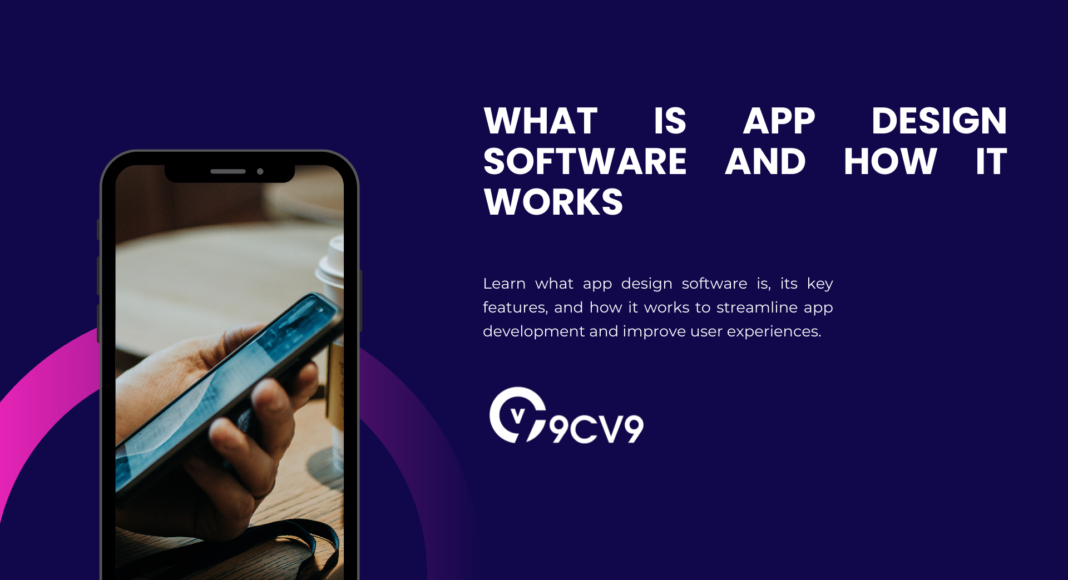


![Writing A Good CV [6 Tips To Improve Your CV] 6 Tips To Improve Your CV](https://blog.9cv9.com/wp-content/uploads/2020/06/2020-06-02-2-100x70.png)


